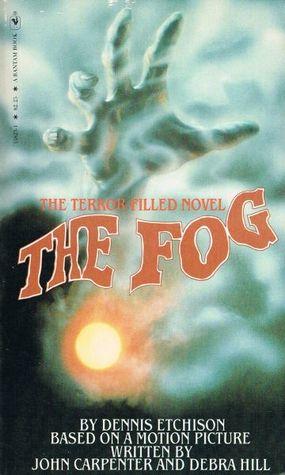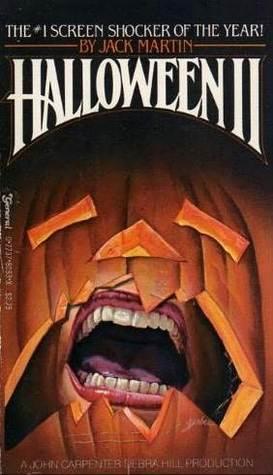For authors like Dennis Etchison, who had prolific writing careers and a popular reputation within the genre of horror, it’s hard to believe that there was ever a time when they weren’t completely brilliant. With a unique voice and the ability to paint a realistically terrifying image of the scenes that play through their head, an author can snatch the very breath from the lips of their readers. So what it is about a specific author that makes them so special? Why are people like Dennis Etchison voices within horror and what did they leave behind as a creative legacy? The answer may seem to be nothing more than simple common sense, but I know I learned something new or at least found something inspirational about the way he grew up and lived his life.
Short Stories
The fictional short story works of the late Dennis Etchison have graced the public since 1961 and can be found in a wide variety of publications–including, but definitely not limited to The Magazine of Fantasy and Science Fiction, Mystery Monthly, Escapade, Fantastic Stories, Fantasy Tales, and Weirdbook. Apart from his work in magazines, he was also featured in anthologies like Orbit, New Writings in SF, od Sterling’s Other Worlds, Prize Stories from Seventeen, The Pseudo-People, and The Future is Now. This is far from an exhaustive list, since his stories can also be found in many of the major horror and dark fantasy anthology publications that include Frights, Horrors, Fears, Nightmares, Dark Forces, Terrors, New Terrors, Shadows, Whispers, Night Chills, Death, World Fantasy Awards, The Dodd, Mead Gallery of Horror, Mad Scientists, Year’s Best Horror Stories, Midnight and many others.
The Dark Country (1982)
In 1982, Etchison published his short story collection, entitled The Dark Country, which subsequently received both the World Fantasy Award for its title story–interestingly enough he tied with Stephen King for this award. For this collection he also won the British Fantasy Award for the Best Collection of that year, an award for which he had been previously nominated for his Late Night Shift (1981) collection. That would be the first time that one writer would receive both of those major awards for a single work. Possibly the most interesting part about the story of his first award-winning collection of short stories is how it very nearly got published over a decade earlier in 1971–but on the eve of the release of the publication, the company went bankrupt and Etchison had to wait for his first collection to reach his audience and be received to critical acclaim. He since published several more collections, some of which won Best Short Story, such as The Olympic Runner (1986) and The Dog Park (1994).
Novels
Aside from his brief time dabbling in the adult, erotic scene, Etchison’s first official novel was intended to be The Shudder, was meant to be published in 1980, the editor was very demanding when it came to changes to the manuscript that Etchison believed were highly unreasonable. Although a portion of the novel was published in A Fantasy Reader–the book of the Seventh World Fantasy Convention–in 1981, the novel as a whole sadly remains unpublished. That’s something that we as readers would nearly die to read!
Movie Novelizations and The Jack Martin Books
Between the 70s and the 90s, Etchison fell into the business of writing movie novelizations–not the best of gigs, given his awards received with his past publications–a form of writing considered to be a thankless form of writing. Arguably the only form that garners less appreciation is ghostwriting. Both forms offer poor pay, unrealistic deadlines, and a certain apathy that consumers approach the style of literature with.
Despite the early obstacles that he faced, Etchison became a renowned author of short stories, novels, and a highly regarded anthologist in his own right. Even Dennis Etchison had to eat though and the decision to churn out novelizations of an already established plotline became an easily defended one. Surprisingly, or perhaps not due to their popularity on-screen, these movie novelizations are now amongst his most popular works as an author. Die-hard fans of the HALLOWEEN franchise tend to hold those particular novelizations by Dennis Etchison, under the pseudonym of Jack Martin, in great esteem.

THE FOG (1980)
One of the only books that Etchison wrote under his own name, versus his pseudonym Jack Martin, was THE FOG (1980). This particular novelization is considered the best of all of them–not just of his movie novelizations, but out of all of his novels period. This may be due in part to the fact that while Etchison’s best work was in short story format, that this particular novelization had a creative voice and flow that went unmatched with the rest of his novel-length work.

The HALLOWEEN Franchise
Etchison wasn’t the author for the novelization of the first HALLOWEEN movie, instead, he followed Curtis Richard’s 1979 publication of HALLOWEEN with the sequel, HALLOWEEN II (1981). The novelization by Curtis Richard was rather impressive, which gave Etchison a fairly high standard of literature to match, even if he was operating under his Jack Martin pseudonym. Considering even just the content of the movie itself, with a storyline that just couldn’t be compared to the original movie, HALLOWEEN II and its subsequent novelization felt as though it were lacking. The quality that he had made himself known for, through his short story collections and THE FOG (1980), was simply not there.
There is something to be said for a good plot and storyline, but no one would ever say it about the HALLOWEEN sequel, because there wasn’t a comprehensive plot to be found. Truthfully, there is little of Etchison’s presence in the book at all, aside from chapter headings and brief moments where he let his writing personality shine through. This book, as well as the following HALLOWEEN III, pushed Etchison out of his comfort zone. As a more cerebral and non-violent horror writer, the fact that he had to write gory and bloody horror forced him to write material that would never have been seen in an original novel. Despite all of the pitfalls of these two particular novelizations, they managed to somehow be bestsellers amongst fans of the genre.

VIDEODROME (1983)
The final movie novelization that Etchison wrote under his Jack Martin pseudonym, was VIDEODROME (1983) a movie originally by David Cronenberg. After THE FOG (1980), VIDEODROME is considered one of his stronger novels, since the genre of horror that it falls under is more in line with the author’s writing style. Etchison’s strengths always came from the ability to create a palpable tension, the apprehension within a character and their motivations, as well as the atmosphere in which the entire story operates under. Unlike the slasher genre that HALLOWEEN belongs to, VIDEODROME capitalized on the fear of mental, emotional, and physical torture that suited Etchison’s talents just fine.
Editorial Work
Etchison not only excelled with his talent for writing–as shown by the many awards he won in that field–but he was also a talented editor, having received two World Fantasy Awards for Best Anthology. One of the awards was for MetaHorror (1993) and the second was for The Museum of Horrors (2002). Other anthologies that he edited include the critically acclaimed Cutting Edge (1986), Gathering The Bones (2003) as well as the three volume series Masters of Darkness.
Have you read any of the novels or short story collections that were authored by Dennis Etchison? Let us know what you thought about them in the comments!

Georgia-based author and artist, Mary has been a horror aficionado since the mid-2000s. Originally a hobby artist and writer, she found her niche in the horror industry in late 2019 and hasn’t looked back since. Mary’s evolution into a horror expert allowed her to express herself truly for the first time in her life. Now, she prides herself on indulging in the stuff of nightmares.
Mary also moonlights as a content creator across multiple social media platforms—breaking down horror tropes on YouTube, as well as playing horror games and broadcasting live digital art sessions on Twitch.
